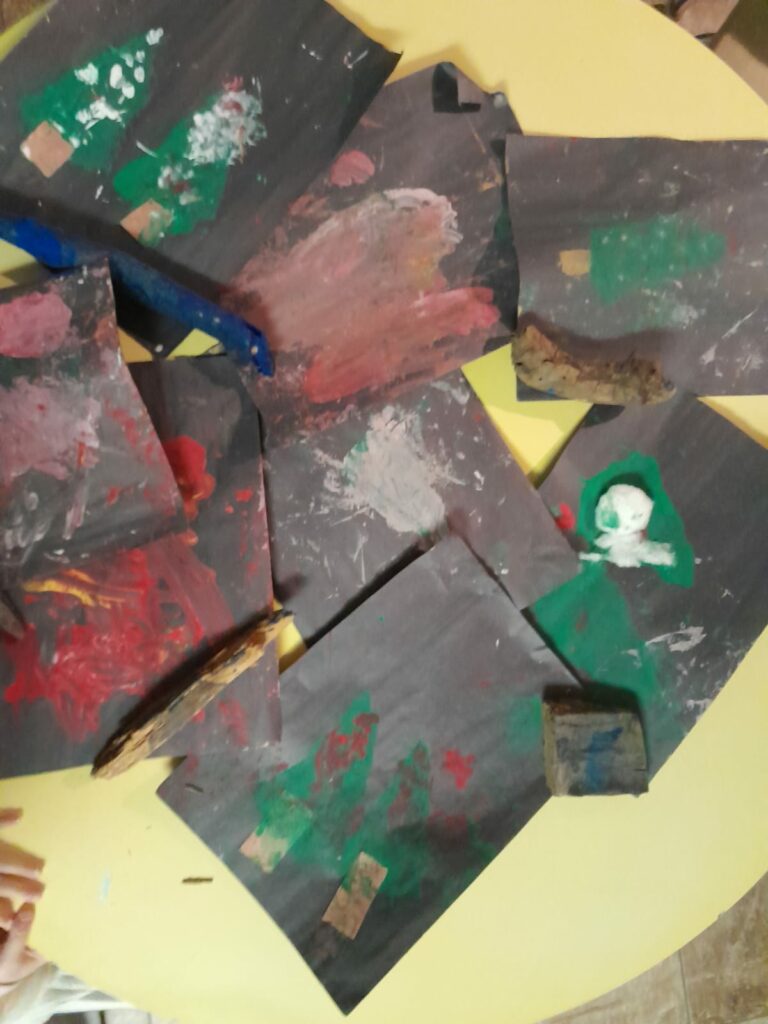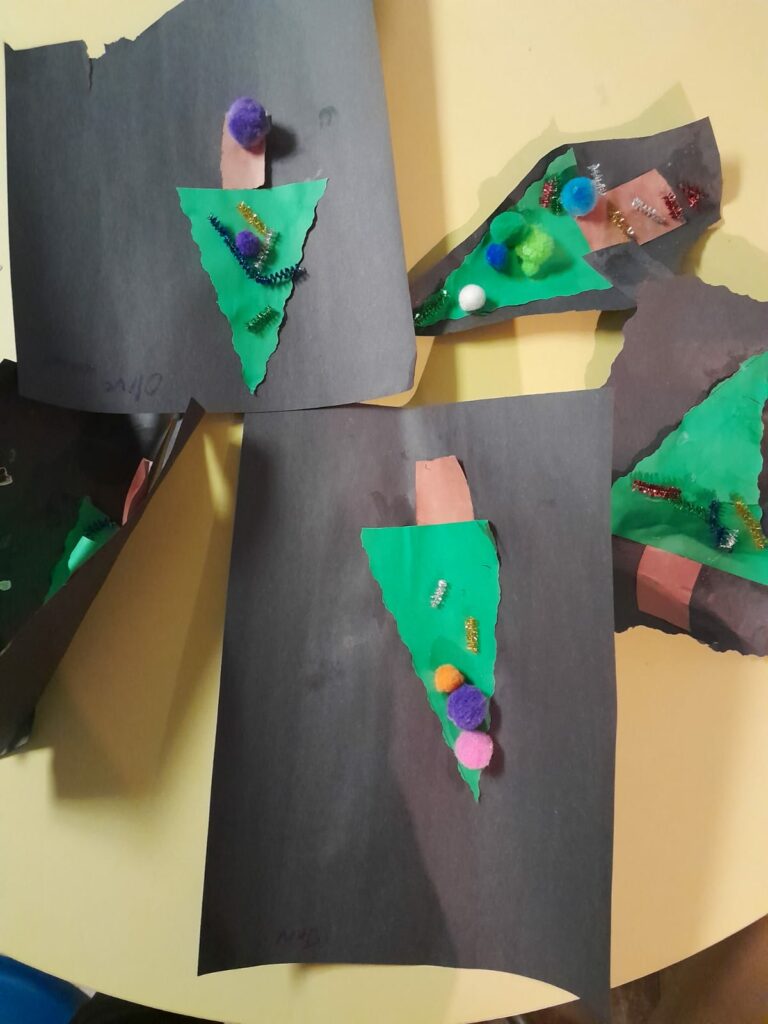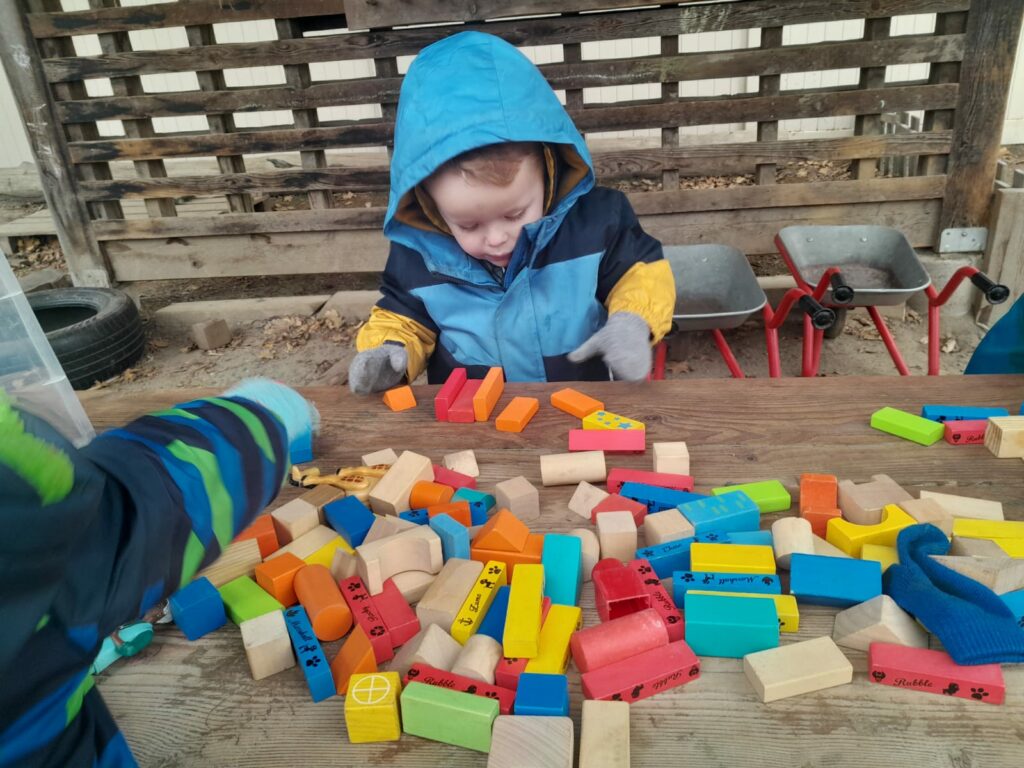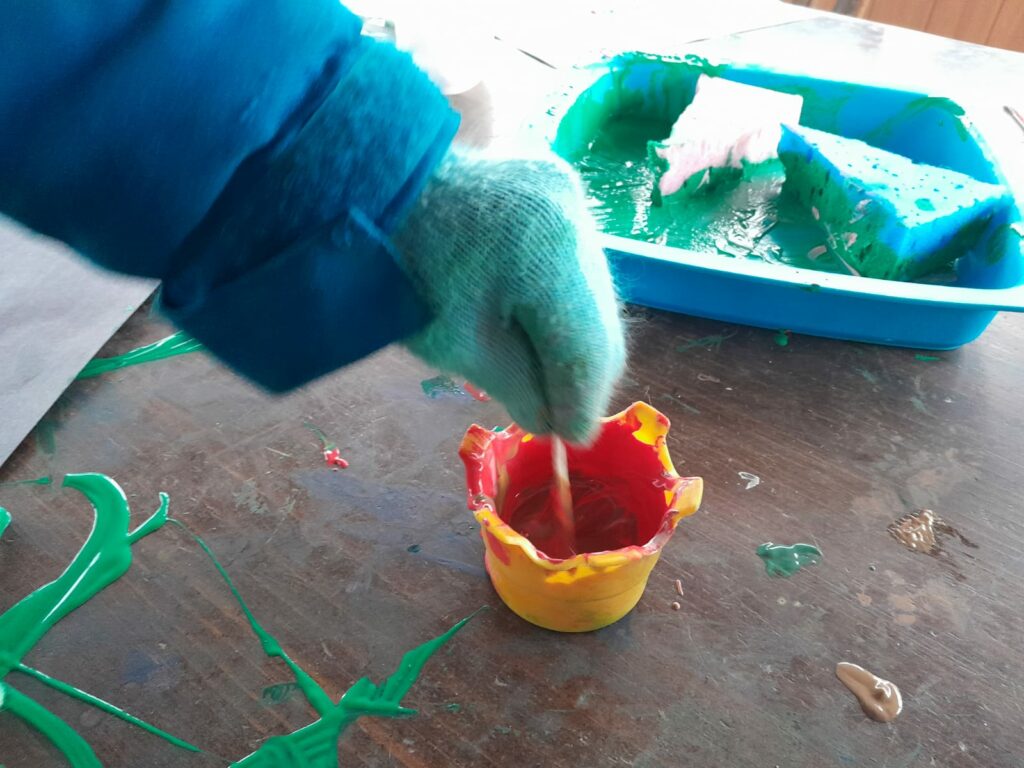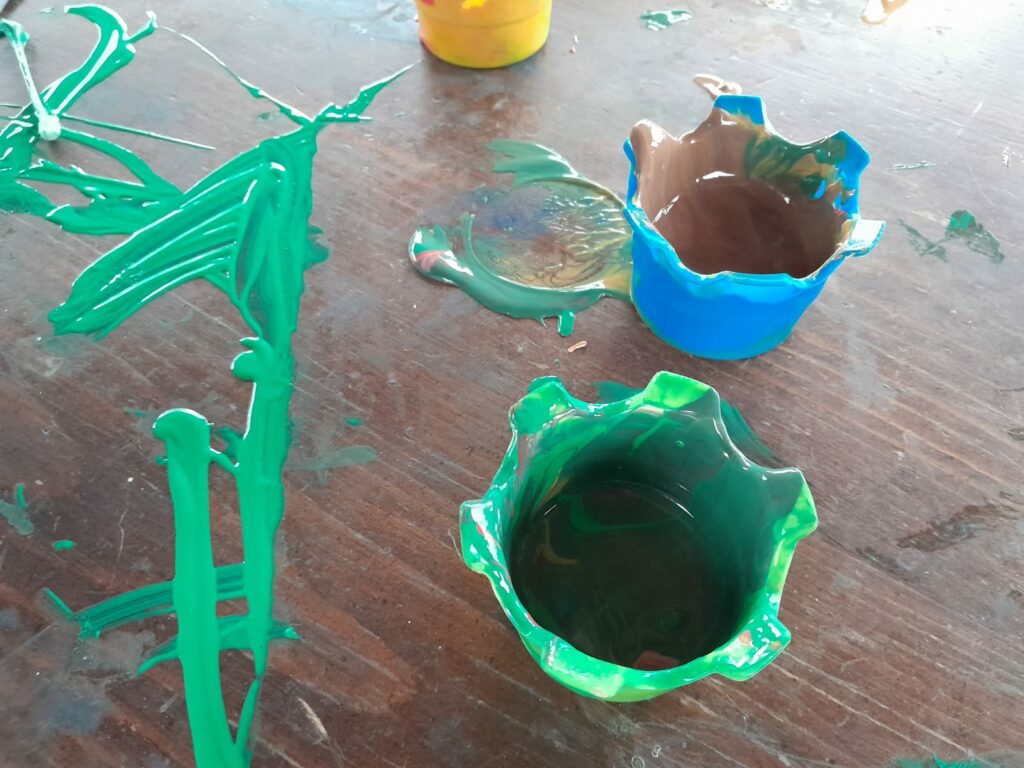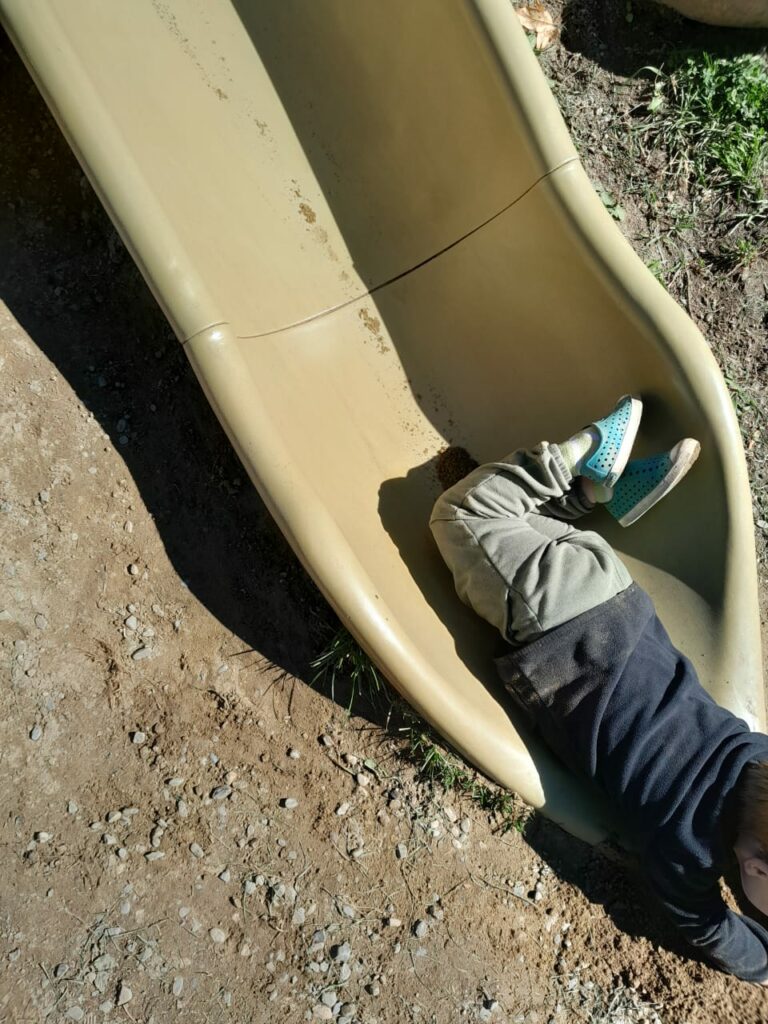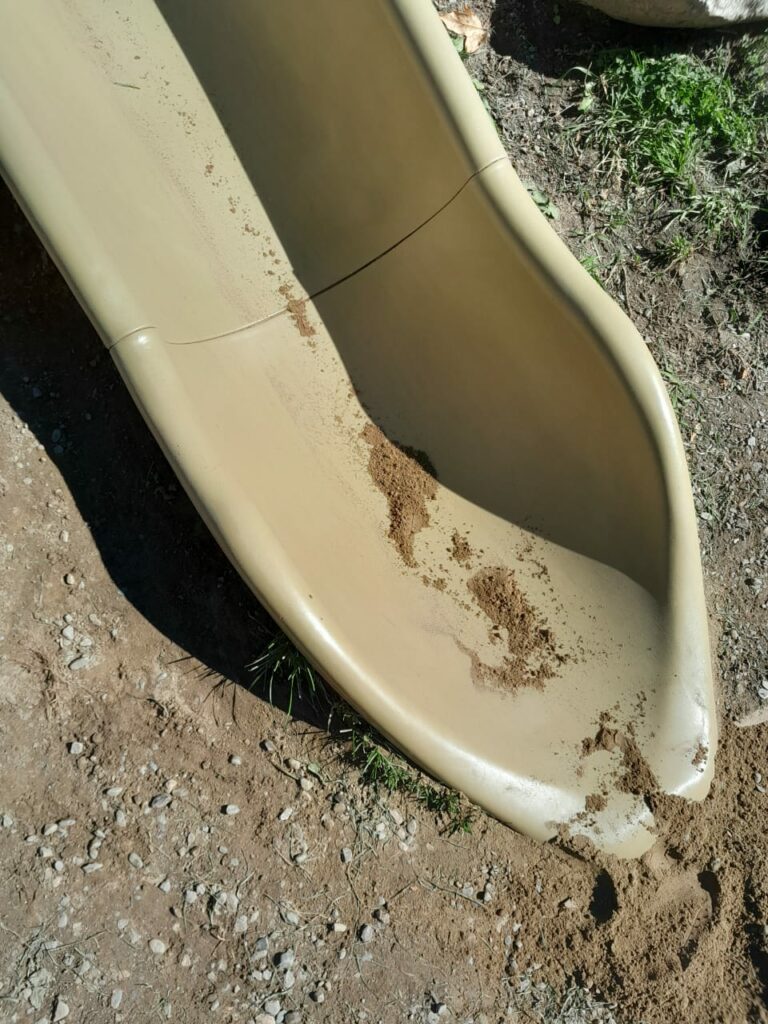My First weeks at the Centre
During my first week at my new practicum center, I learned about the organization’s policies and met the children. I chose to focus on building relationships during this week because I believe it is crucial for the well-being and learning of both the children and me as a student entering the field of education. According to the BCELF principles, “Relationships are the context for well-being and learning,” and Principle 5 emphasizes the importance of connecting to land, culture, community, and place. Building connections and relationships with the children, the center, the land, and other members is a significant aspect of my practicum experience in early childhood education. As part of building these connections, I decided to read a storybook to the children during nap time, and we explored “The Earthworm Book” and “Halloween” together. We also engaged in play to get to know each other better. Additionally, I had the opportunity to connect with other educators and students in the practicum to familiarize ourselves with the environment.
Week 2
This semester, I plan to engage closely with children and listen to their thoughts while taking notes of what they say during my Pedagogical narration. I have documented numerous instances and observed various explorations happening on the slide, with wooden blocks, and with earthworms, as well as in the mud with beans in the garden. Additionally, I have captured some photos of their explorations.
The Slider
The children explored with the sliders in various ways, sliding through them, used mud and rocks. At one point, they even brought chairs to slide on, but the educators intervened and stopped them from continuing with the chairs due to safety concerns. They explored the slider by running, jumping, and using different body movements. According to the BCELF, environments play a crucial role in well-being and learning, and play is essential for both well-being and learning.
Log
The children had fun exploring the log in the yard, laughing and teasing each other as they played. They pretended to drive a car, engaging in different pretend play. According to the BCELF principle, play is essential for both well-being and learning. Pretend play plays a vital role in well-being and learning as children interact with objects and other children, creating stories and gaining meaningful experiences from the world around them.
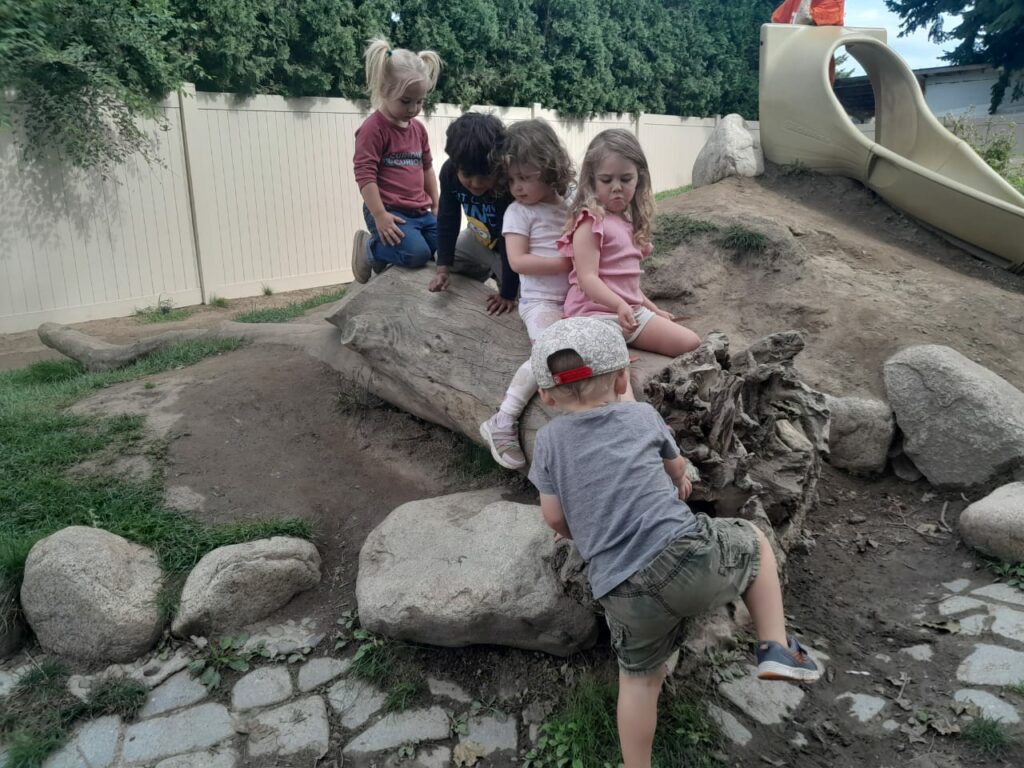
Week 3
I am continuing to focus on forming connections with the children. In the process, I discovered where much of their curiosity and exploration occurs, which guided me to select “Wood Blocks” as the theme for my pedagogical documentation. After discussing this topic with my mentor and considering other ideas, we ultimately agreed to center our Pedagogical narration on Wood Blocks.
Week 4
I continue to prioritize building trust and relationships with the children, while also improving my communication and practical skills in interacting with them. I began the exploration of wood blocks in collaboration with the children and started doing stories in circle time. Additionally, I took the lead in conflict resolution and initiated mealtime activities.
Week 5
This week, I focused entirely on leading circle time in conjunction with the wood block exploration with the children. One notable observation was that Jack and Erik began investigating the gems. They discovered several gems in the yard and started concealing them in the gravel only to find them again later. This activity persisted for some time, with the children expressing happiness and curiosity throughout the process. It reminds me of BCELF principle 7, which emphasizes that play is essential to well-being and learning. Children’s learning, development, and understanding are all rooted in play. This play can take many forms: it can be dynamic, spontaneous, group-oriented, unpredictable, experimental, or individual. Interacting with others and the materials around them allows children to see, feel, touch, and listen, enhancing their understanding of the world. Play is a method for exploring and learning about the world.
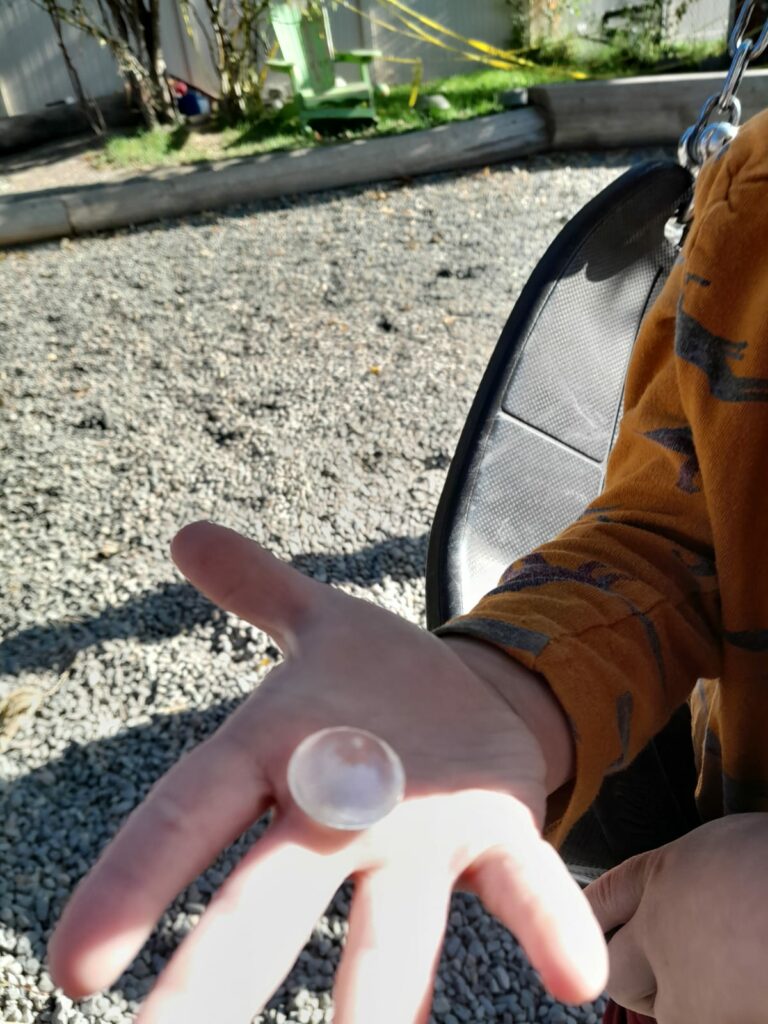
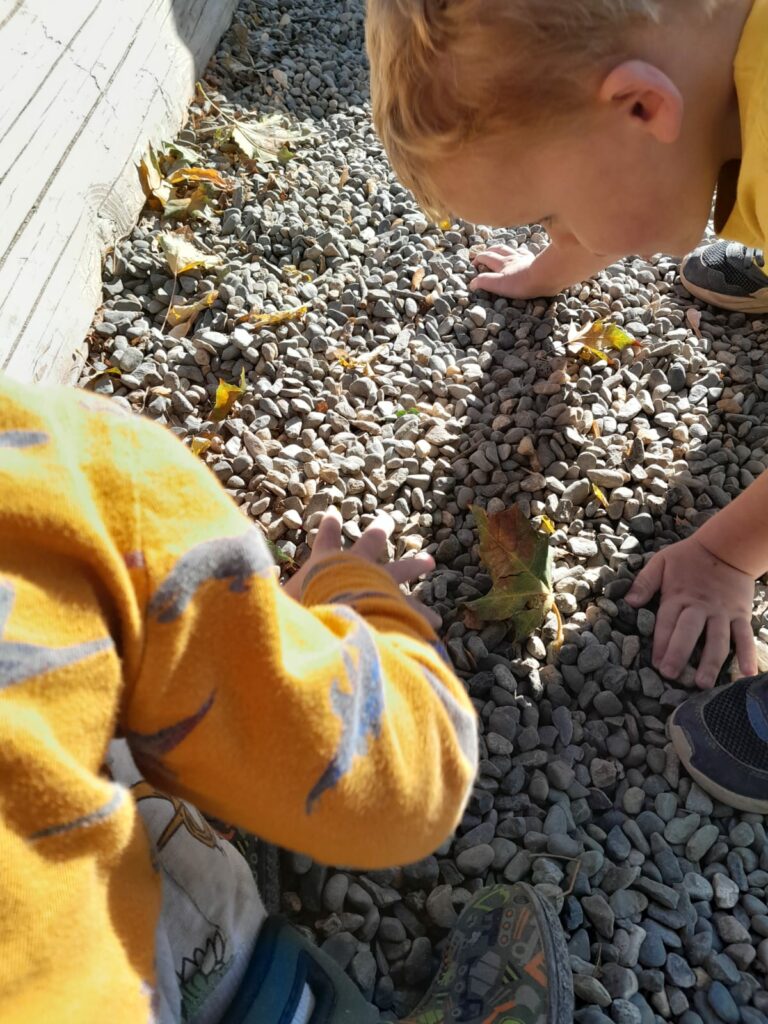
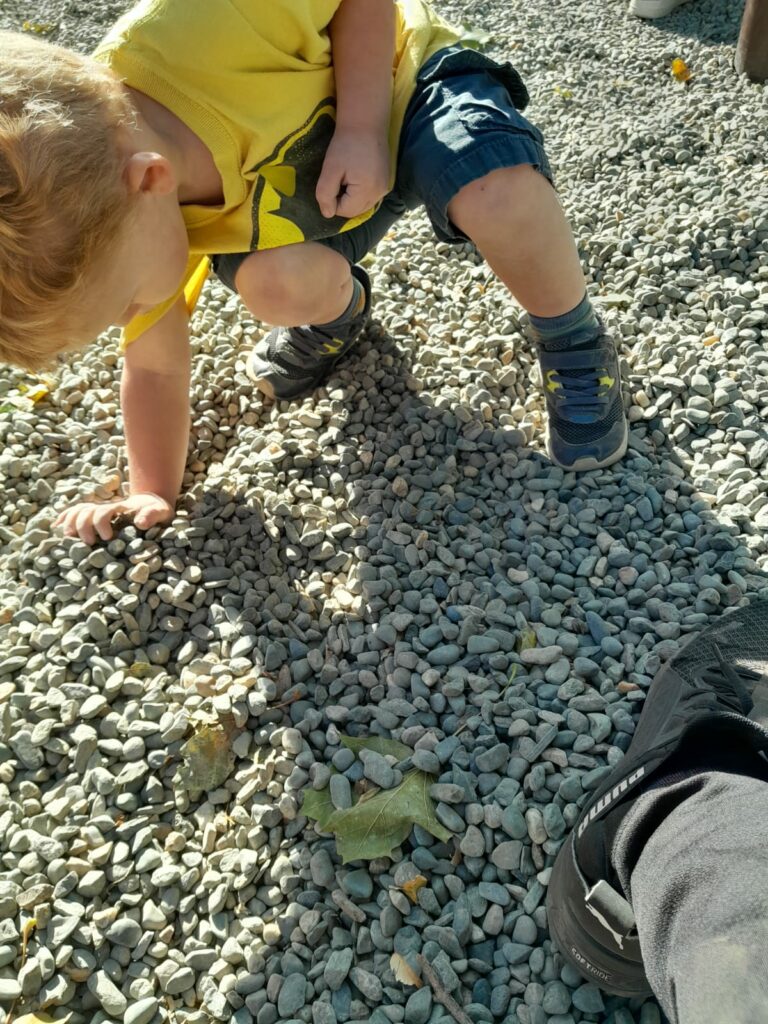
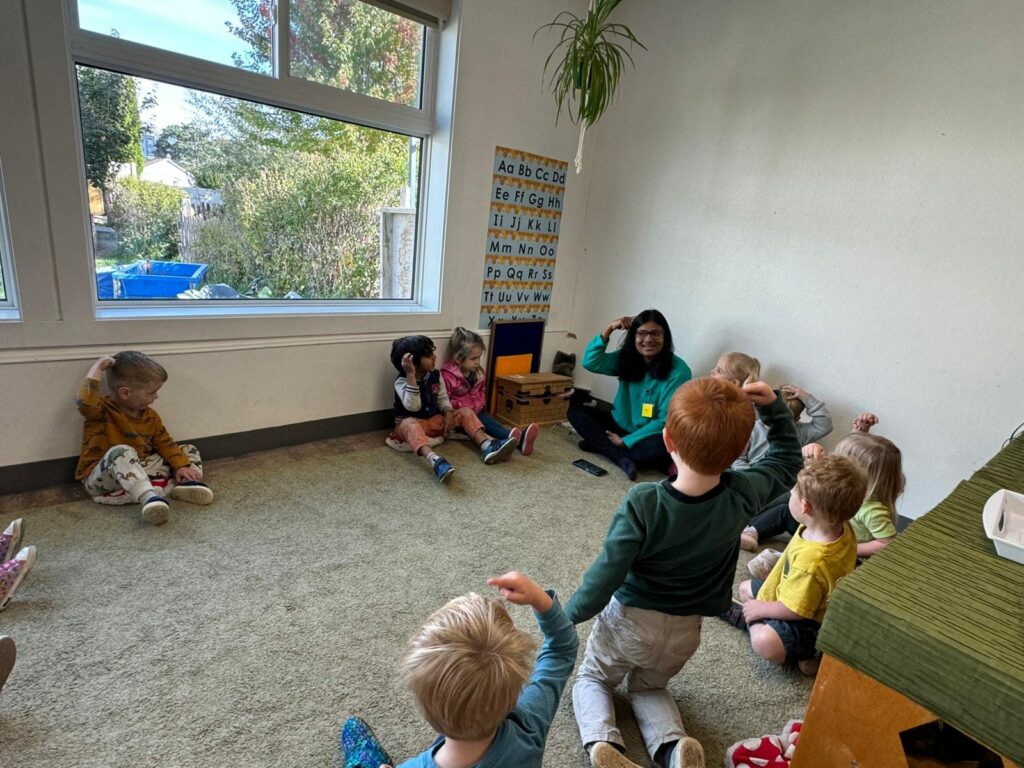
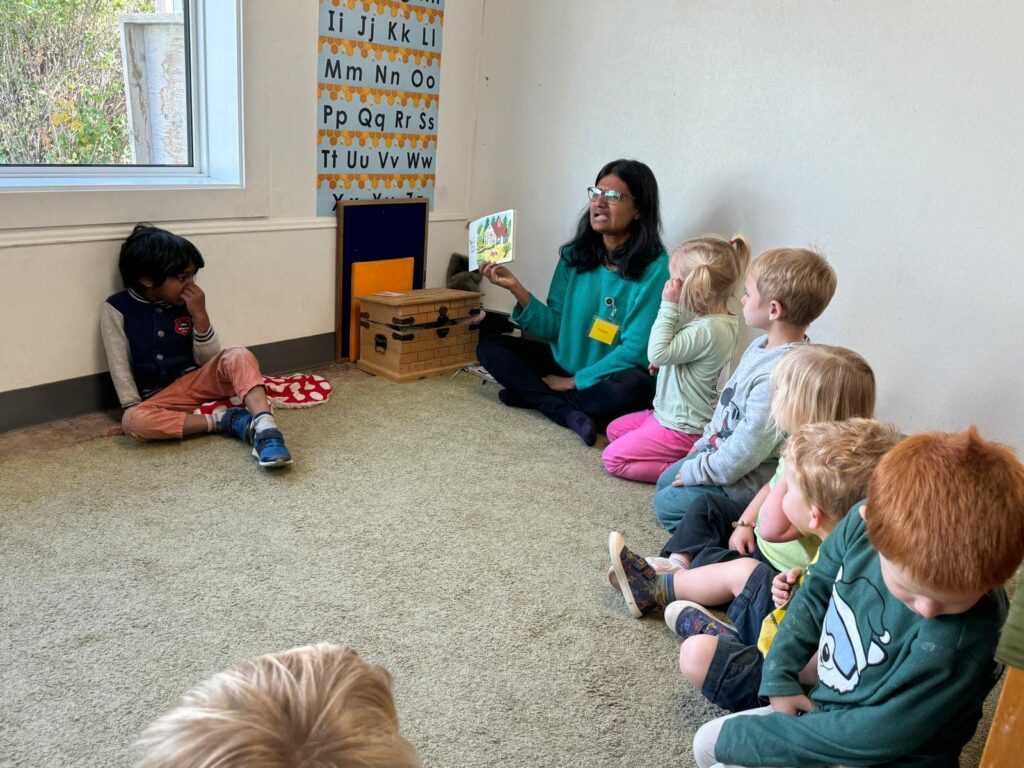
Week 6
As we continued our exploration of woodblocks this week, I decided to organize an activity involving woodblocks and paint. For this, I utilized two different types of paper, some colored paint, and woodblocks. I laid out the long brown paper along the path in the yard, placed some colored paint nearby, and arranged the woodblocks around it. When the children came outside, they appeared very curious and began stamping on the paper with the blocks. Some of them even used their shoes to stamp on the paper. The stamping with the blocks was initiated by child A, and then other children quickly joined in. I later switched the paper to smaller white sheets.
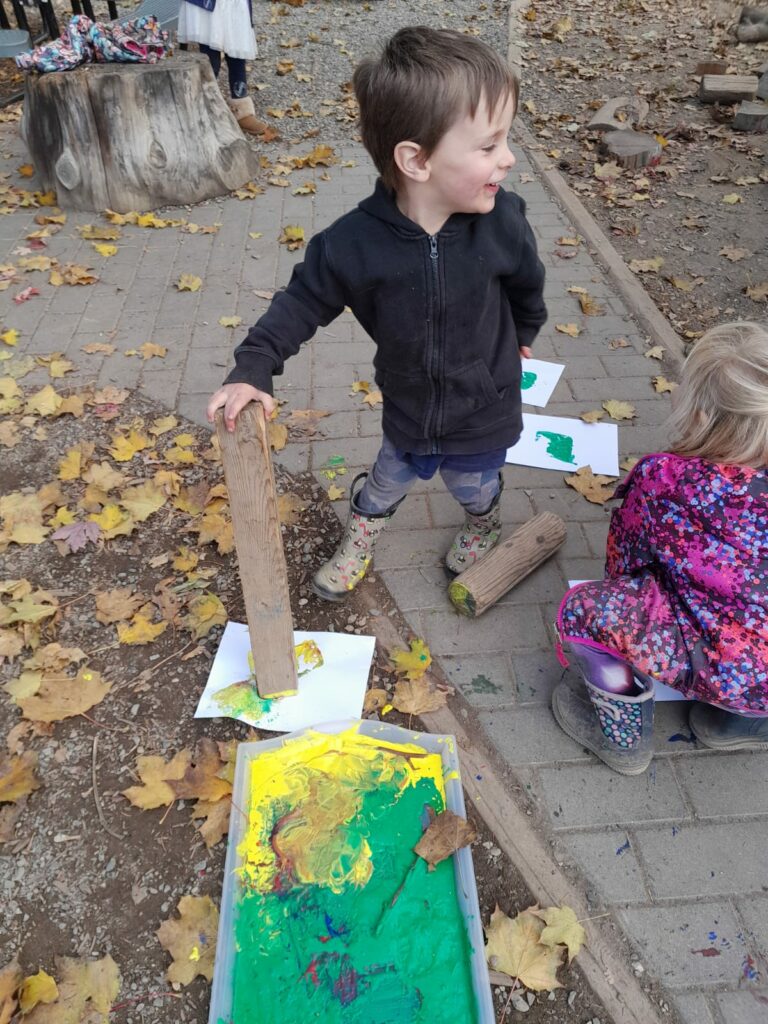
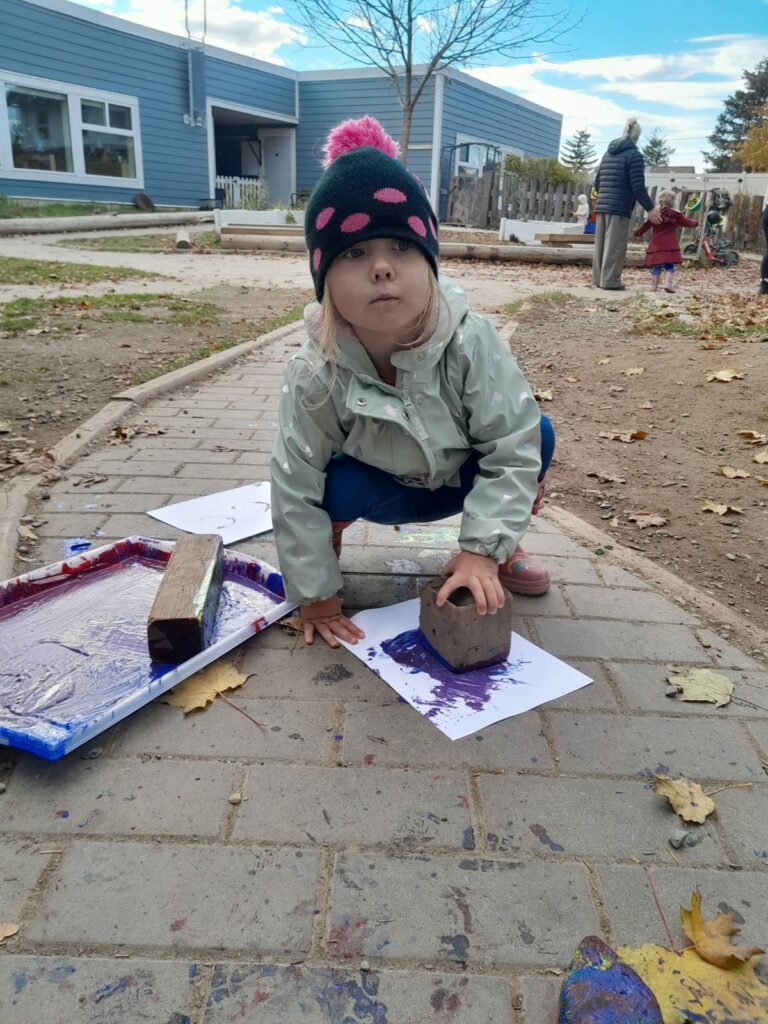
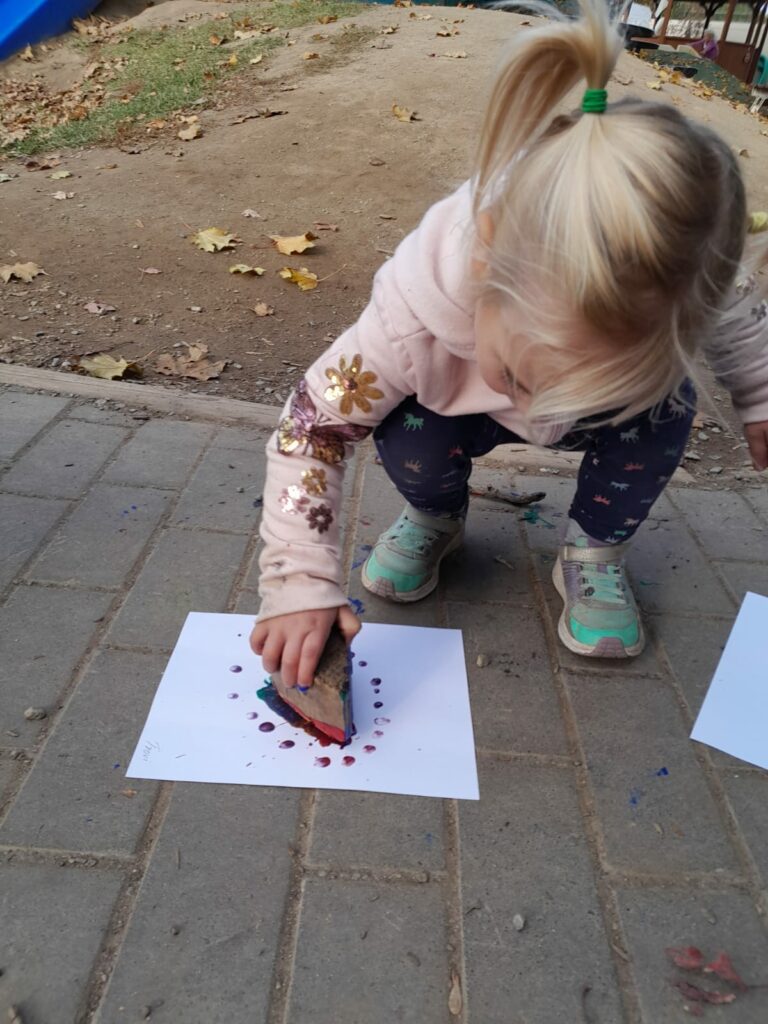
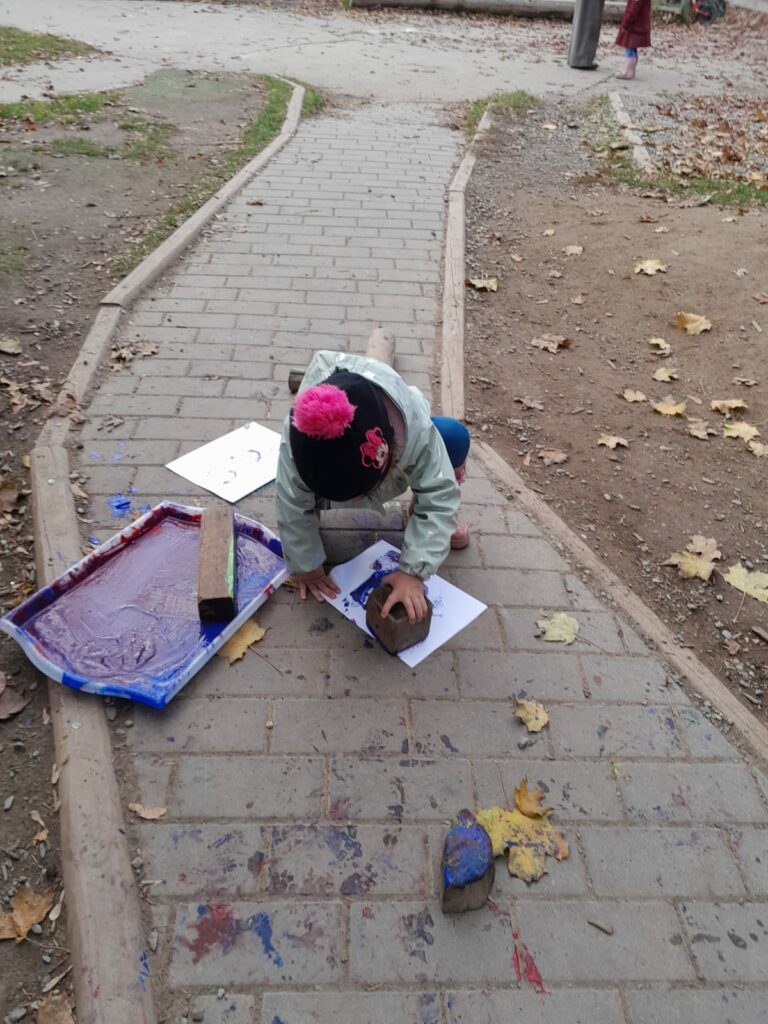
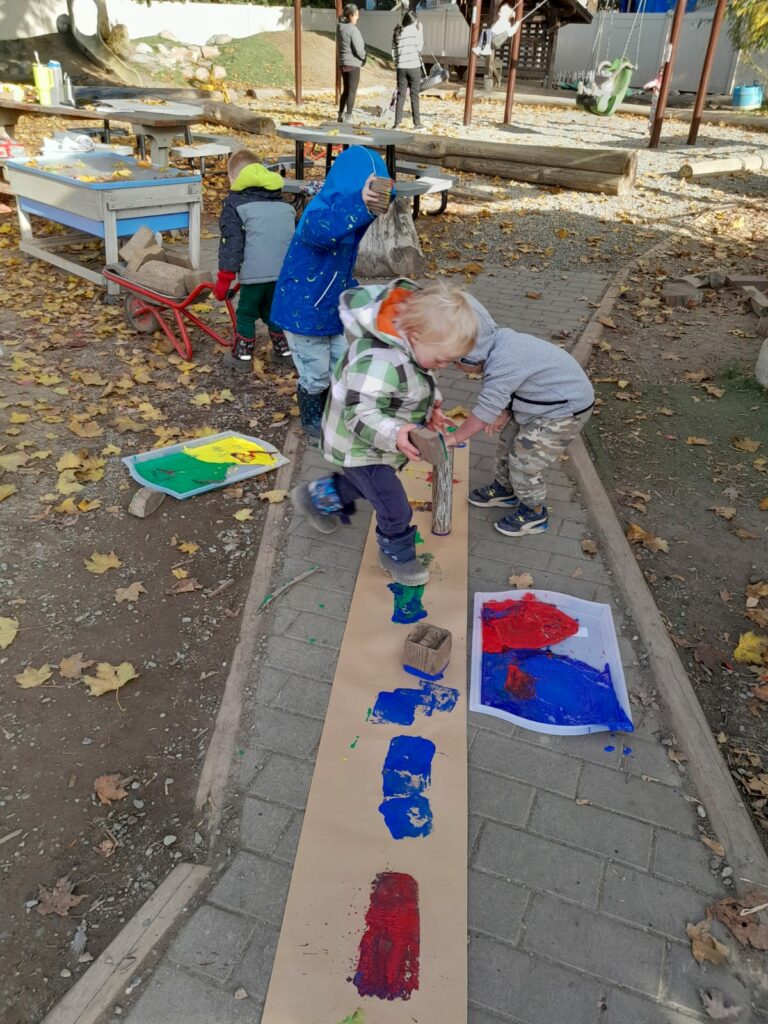
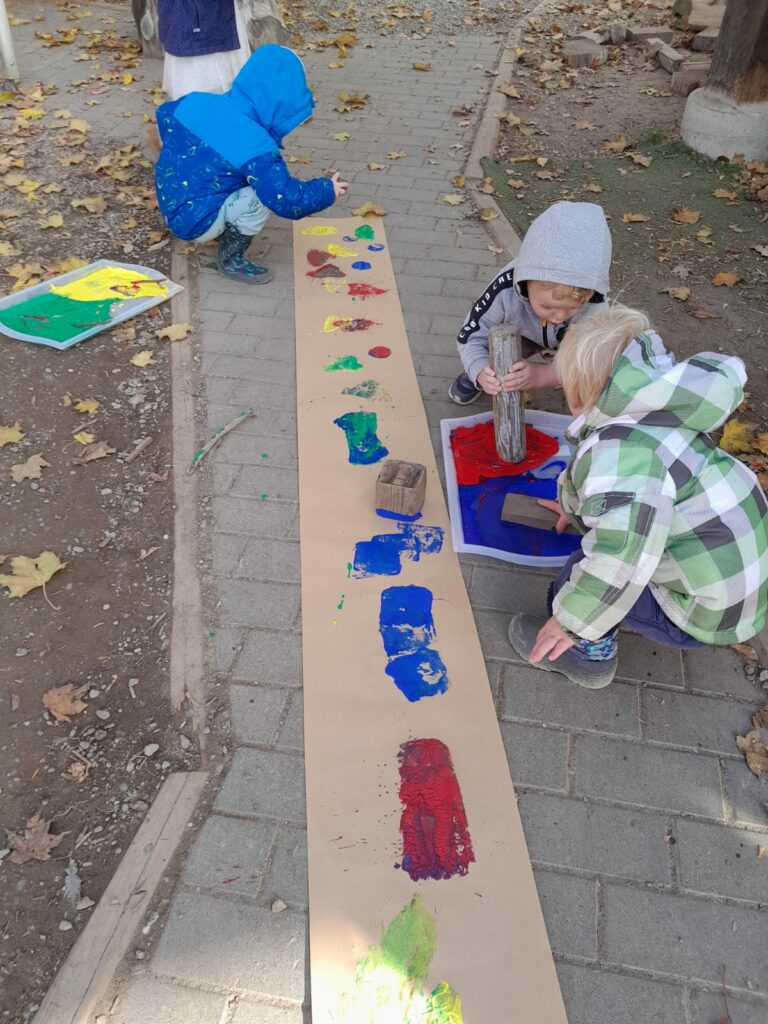
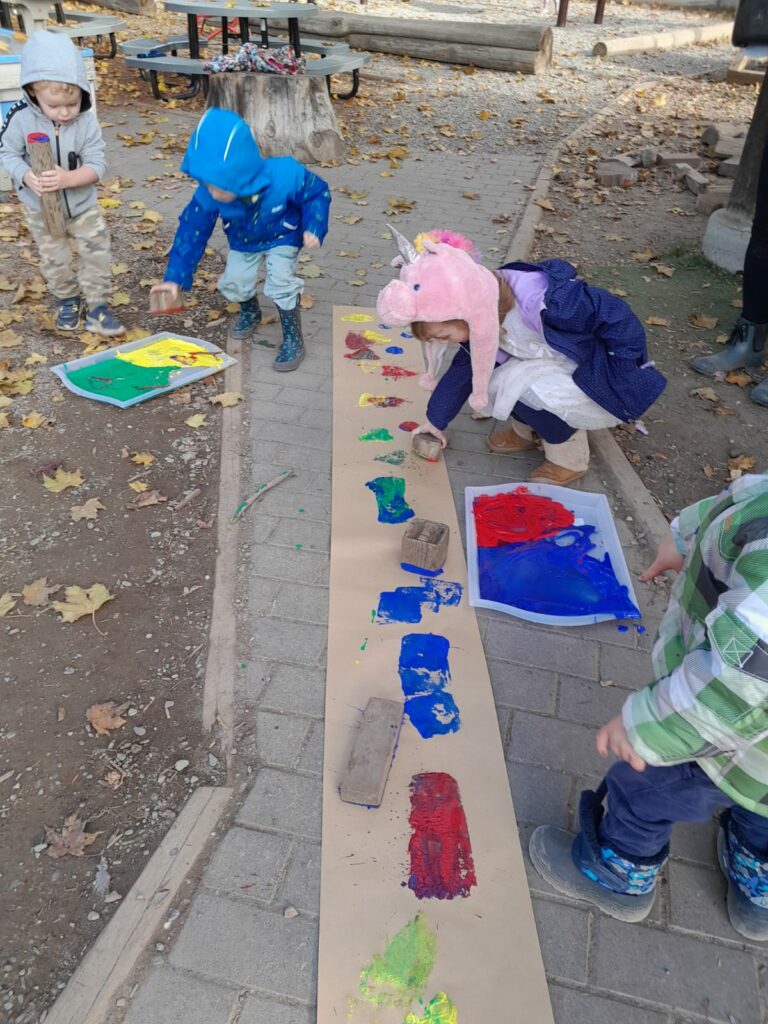
Week 7
I paid more attention to circle time, and my mentor provided feedback on my progress in that area. I also began to enhance my professional and practical abilities by taking on responsibilities such as serving meals, assisting during nap time, and maintaining regular communication with mentors. I built trustworthiness, allowing both educators and children to depend on me. Additionally, I continued to explore woodblocks alongside the children. I also shared pictures of various buildings, castles, and houses to enrich children’s understanding.
Week 8
This week, I organized another planned activity where I provided them with colors and paper for painting. Trovi created a path to her home, while another child simply painted a flower. Each child contributed their artwork on the paper. One fascinating observation I made was that during this process, they engaged in meaningful conversations and built connections. They experimented with various colors. I supplied them with just two colors; they blended these two to make new shades and further explored mixing techniques. They adjusted the amount of paint used in their mixtures to produce different variations of the same colors. They also applied paint to their hands, pressed it onto the paper, and engaged in various forms of color experimentation.
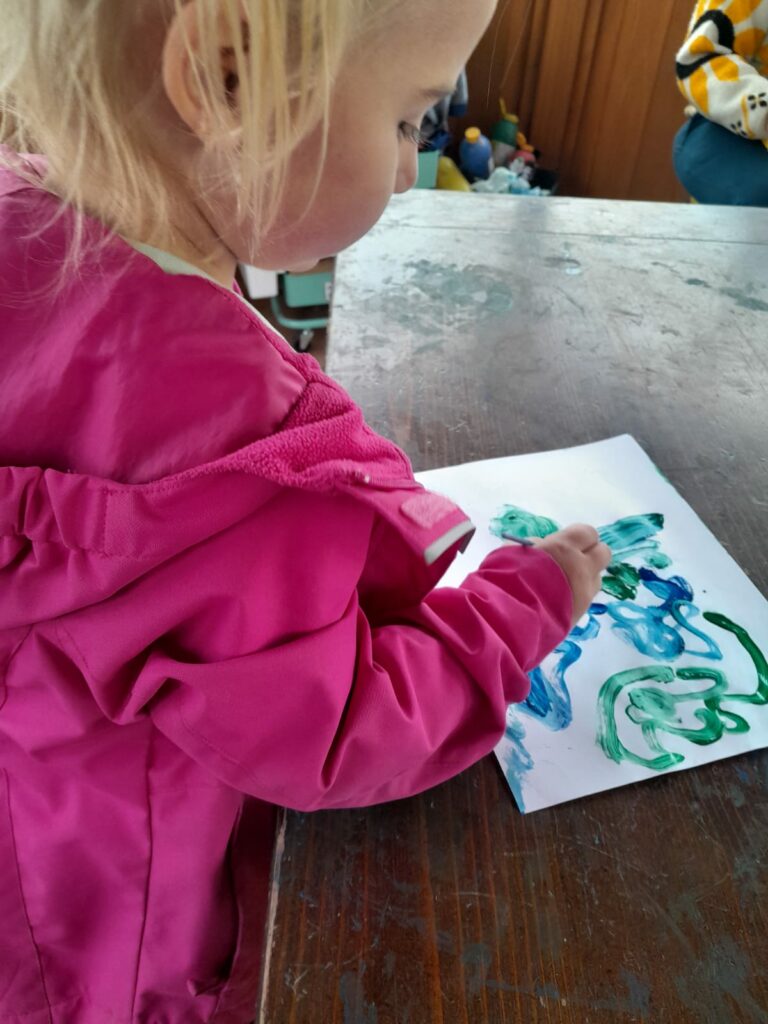
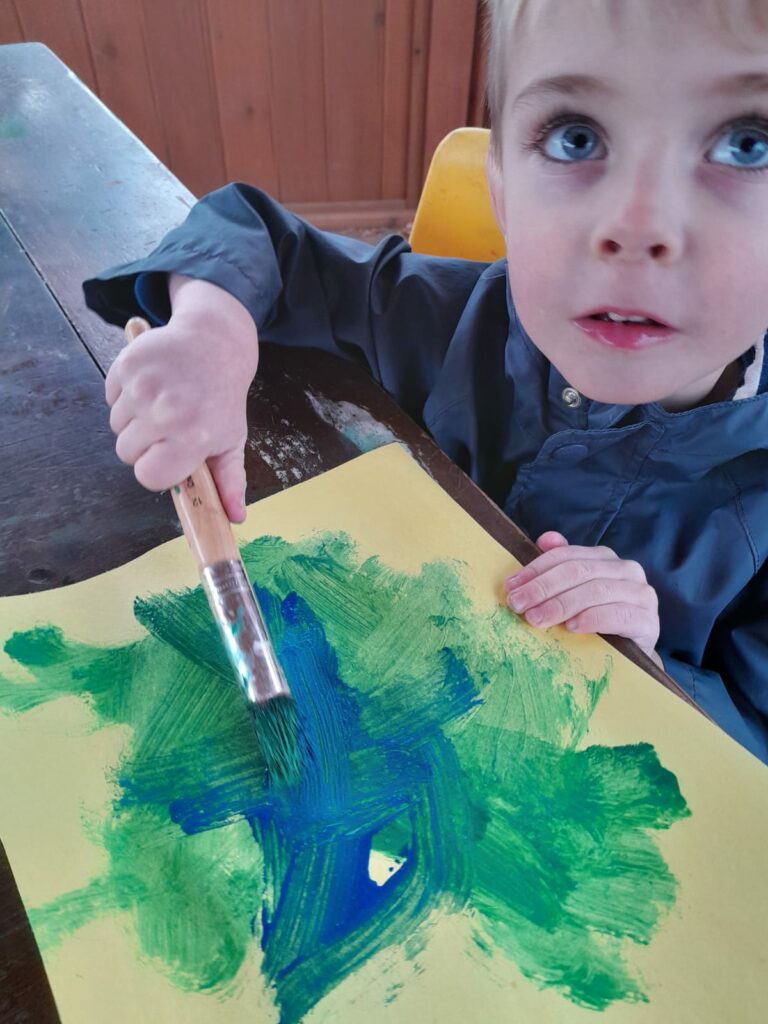
Week 9&10
I persisted in my investigation of wood blocks, enhancing my practical and professional abilities as an educator. I began to take on more roles as an educator, increasing the number of activities and my engagement with the children. I addressed the conflicts that arose among the children. Each week, I updated the pedagogical documentation displayed in the classroom and included additional exploration.
Week 11, 12 & 13
I assumed greater responsibilities as an educator and took leadership roles in the classroom. I was in charge of overseeing mealtimes and engaging the children in a variety of activities. I managed transitions effectively by escorting them to the yard while ensuring proper yard checks and accurate headcounts. Setting up the beds and helping the children settle down to sleep. I assisted the children in putting on their winter boots and communicated to other educators the counts and other information as needed. Throughout these three weeks, I enhanced both my professional and practical skills as an educator.
